Plot complex-valued functions
Project description
Plot complex-valued functions with style.
cplot helps plotting complex-valued functions in a visually appealing manner.
There are two basic building blocks:
- Contours along constant absolute value and/or the constant argument (phase, angle)
- domain coloring, i.e., mapping the absolute value to lightness and the complex argument to the chroma of the representing color
Install with
pip install cplot
and use as
import numpy as np
import cplot
def f(z):
return np.sin(z ** 3) / z
plt = cplot.plot(
f,
(-2.0, +2.0),
(-2.0, +2.0),
400,
# colorbars: bool = True,
# abs_scaling="h-1.0", # how to scale the lightness in domain coloring
# colorspace: str = "cam16", # ditto
# abs/args contour lines:
# levels=("auto", (-np.pi / 2, 0, np.pi / 2, np.pi)),
# linecolors = "#a0a0a050",
# linestyles = "solid",
# linestyle_abs1 = "solid"
)
plt.show()
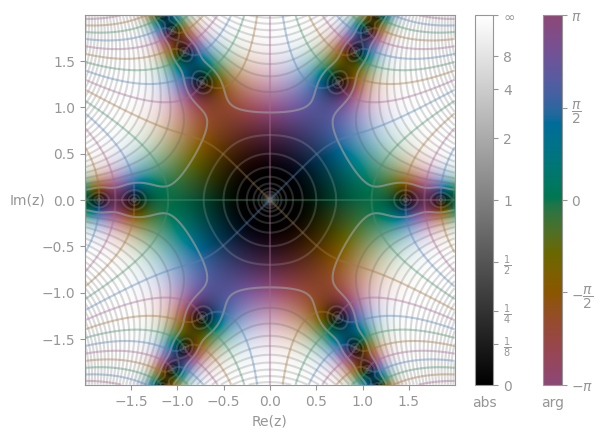
Other useful functions:
# There is a tripcolor function as well for triangulated 2D domains
cplot.tripcolor(triang, z)
# The function get_srgb1 returns the SRGB1 triple for every complex input value.
# (Accepts arrays, too.)
z = 2 + 5j
val = cplot.get_srgb1(z)
-
abs_scalingcan be used to adjust the use of colors.hwith a value less than1.0adds more color which can help isolating the roots and poles (which are still black and white, respectively).h-0.0ignores the magnitude off(z)completely.arctanis another possible scaling. -
colorspacecan be set tohslto get the common fully saturated, vibrant colors. This is usually a bad idea since it creates artifacts which are not related with the underlying data. From Wikipedia:Since the HSL color space is not perceptually uniform, one can see streaks of perceived brightness at yellow, cyan, and magenta (even though their absolute values are the same as red, green, and blue) and a halo around L = 1/2. Use of the Lab color space corrects this, making the images more accurate, but also makes them more drab/pastel.
Default is
"cam16"; very similar is"cielab"(not shown here).
Consider the test function (math rendered with xdoc)
f(z) = \frac{(z^2 - 1) (z - 2 - 1j)^2}{z^2 + 2 + 2j}
h-1.0 |
h-0.5 |
h-0.0 |
|---|---|---|
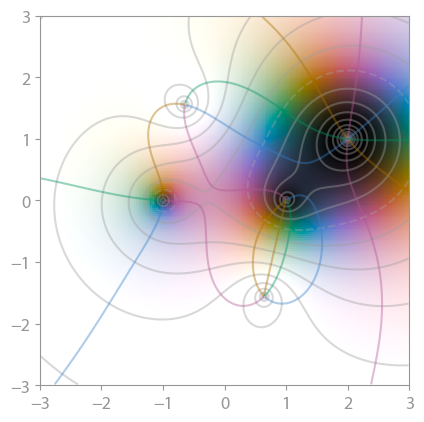 |
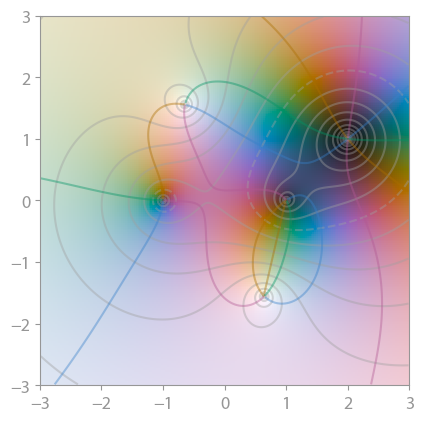 |
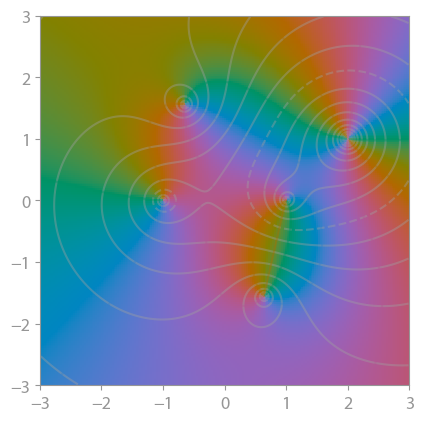 |
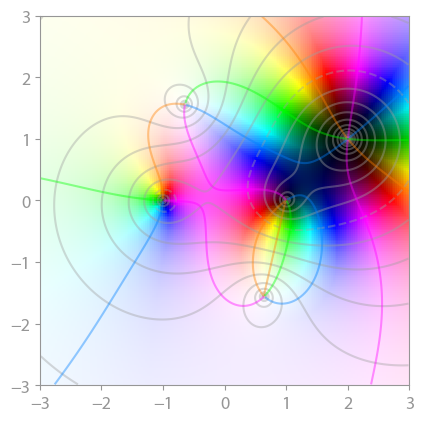 |
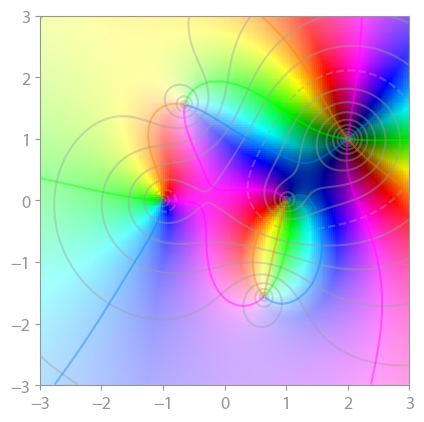 |
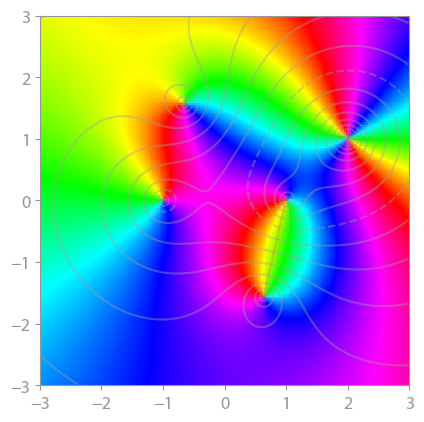 |
The representation is chosen such that
- values around 0 are black,
- values around infinity are white,
- values around +1 are green,
- values around -1 are deep purple,
- values around +i are blue,
- values around -i are orange.
(Compare to the z1 reference plot below.)
With this, it is easy to see where a function has very small and very large values, and the multiplicty of zeros and poles is instantly identified by counting the color wheel passes around a black or white point.
Gallery
All plots are created with default settings.
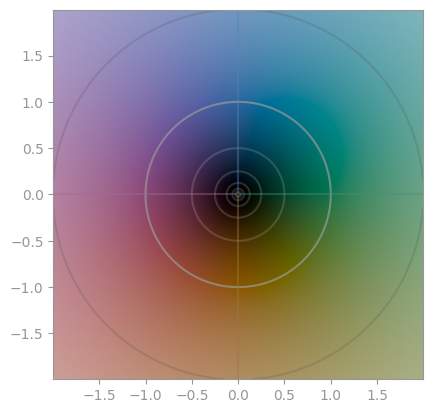 |
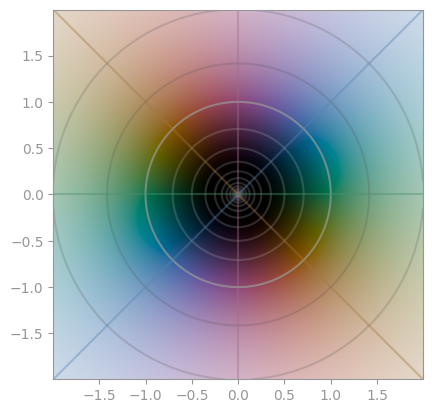 |
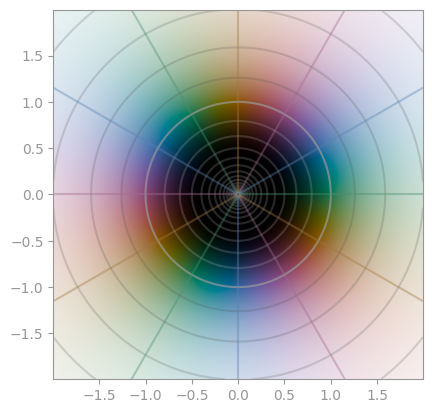 |
|---|---|---|
z**1 |
z**2 |
z**3 |
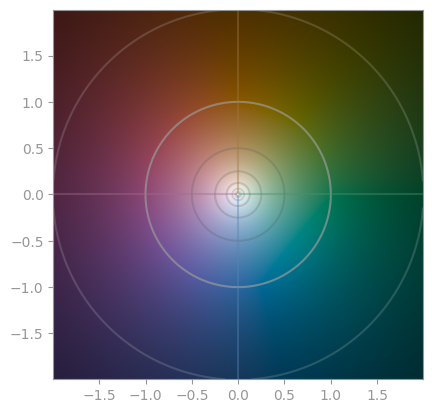 |
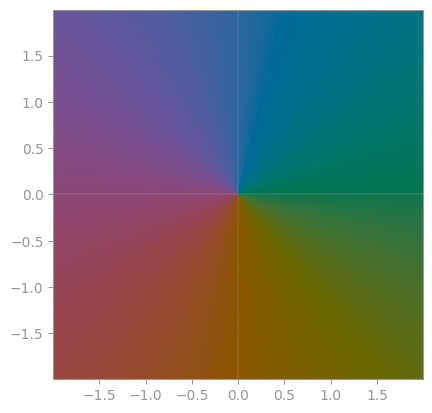 |
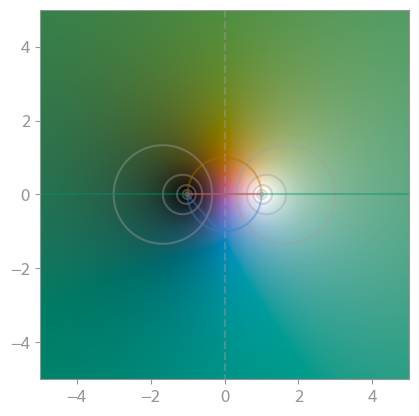 |
|---|---|---|
1/z |
z / abs(z) |
(z+1) / (z-1) |
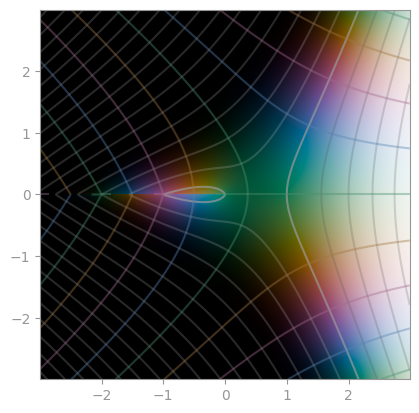 |
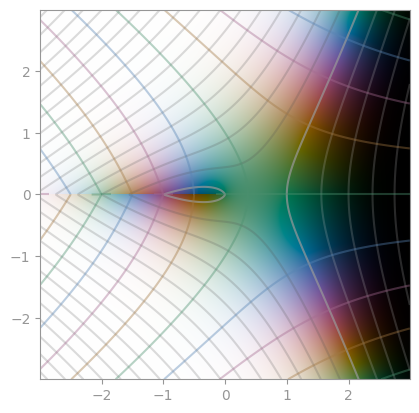 |
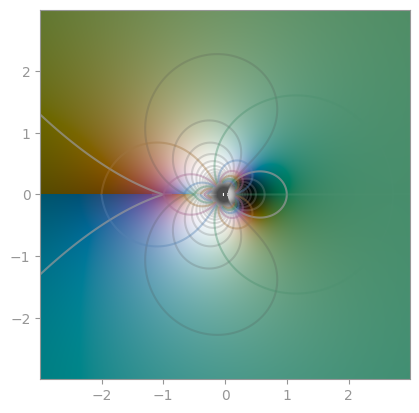 |
|---|---|---|
z ** z |
(1/z) ** z |
z ** (1/z) |
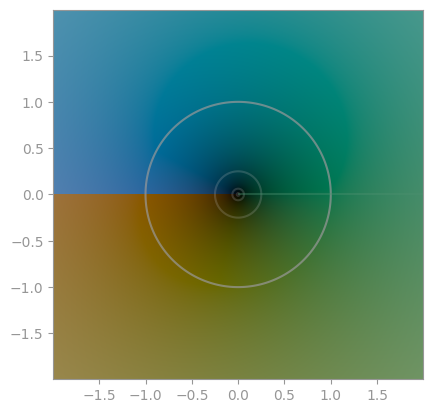 |
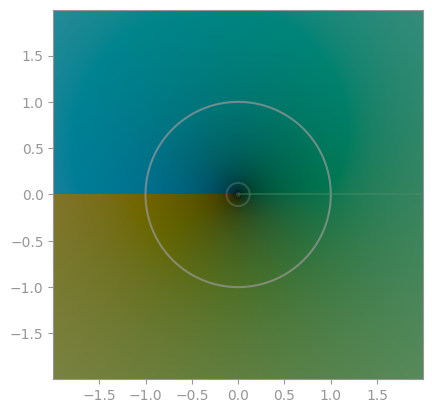 |
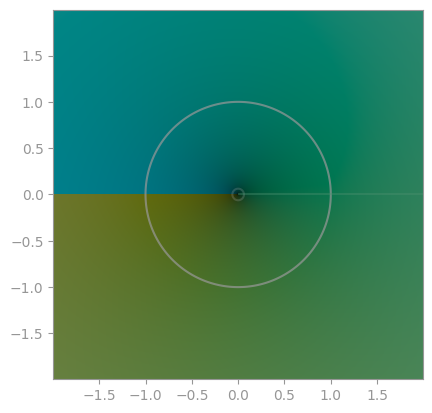 |
|---|---|---|
np.sqrt |
z**(1/3) |
z**(1/4) |
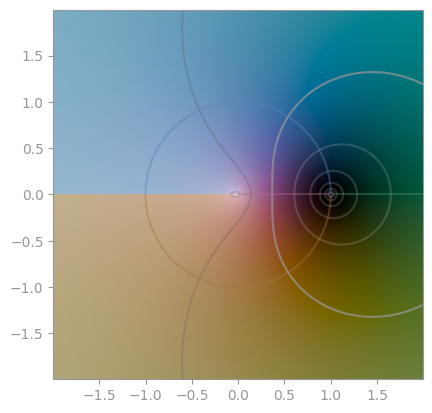 |
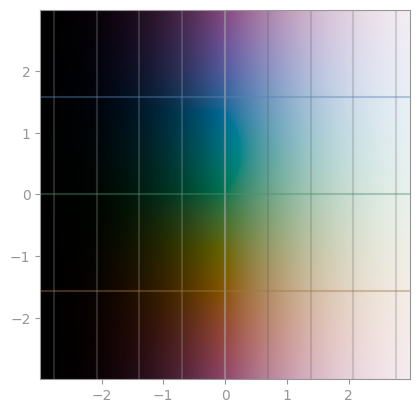 |
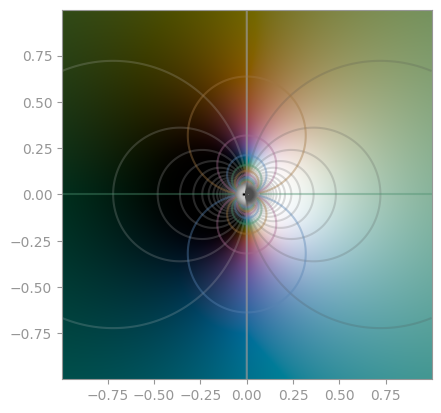 |
|---|---|---|
np.log |
np.exp |
exp(1/z) |
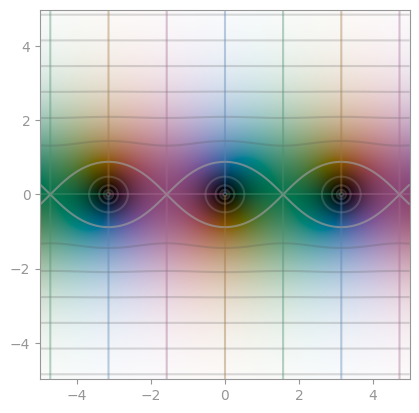 |
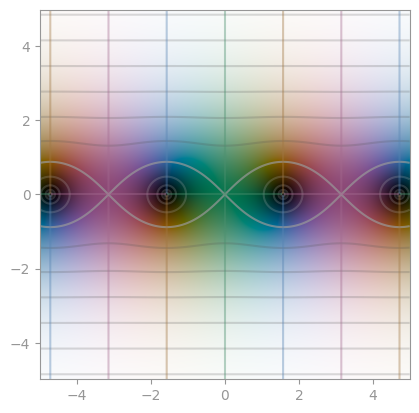 |
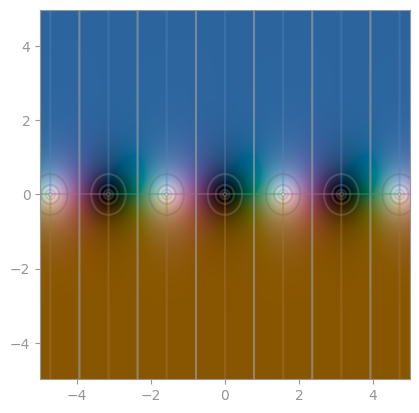 |
|---|---|---|
np.sin |
np.cos |
np.tan |
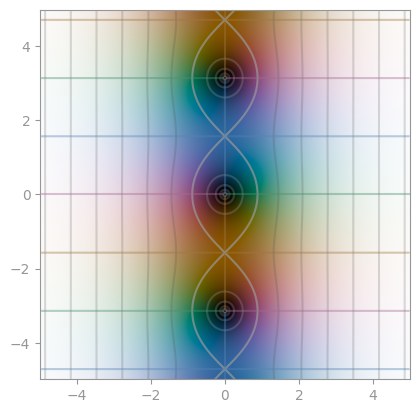 |
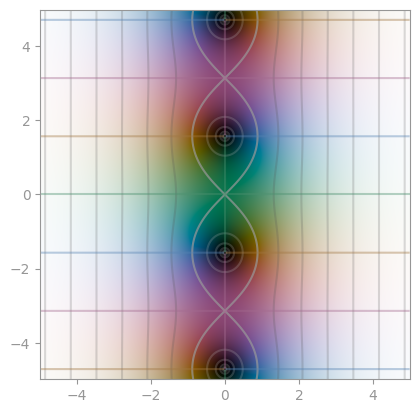 |
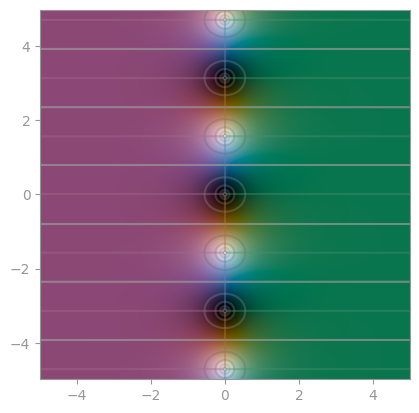 |
|---|---|---|
np.sinh |
np.cosh |
np.tanh |
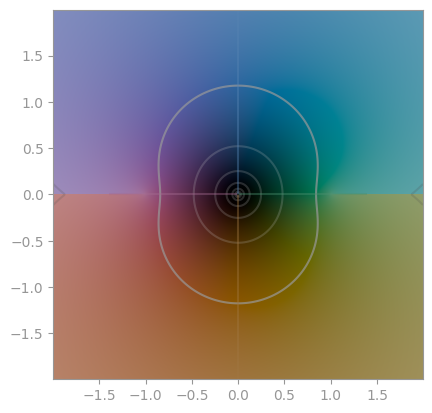 |
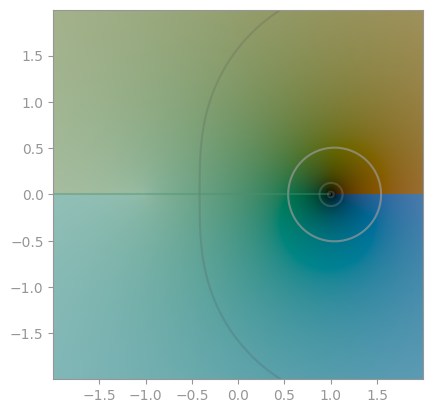 |
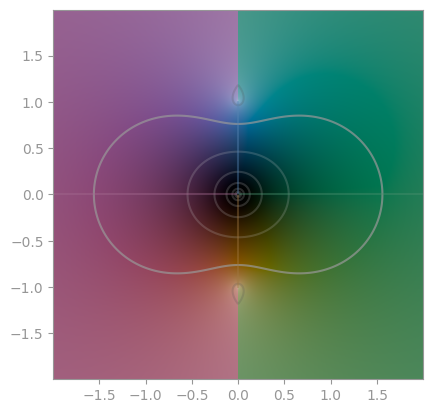 |
|---|---|---|
np.arcsin |
np.arccos |
np.arctan |
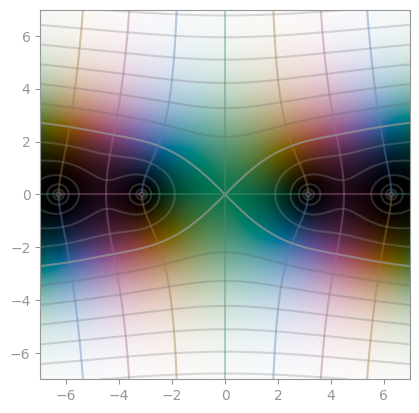 |
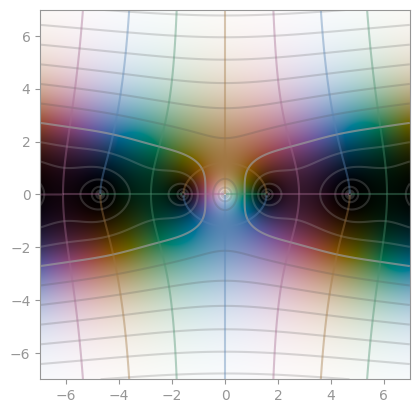 |
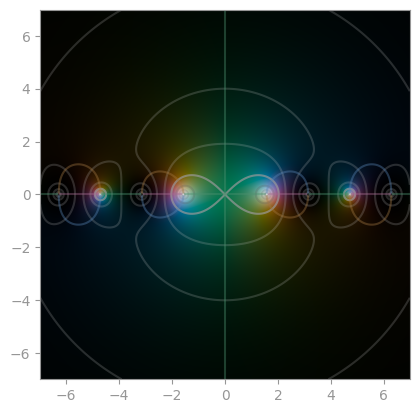 |
|---|---|---|
sin(z) / z |
cos(z) / z |
tan(z) / z |
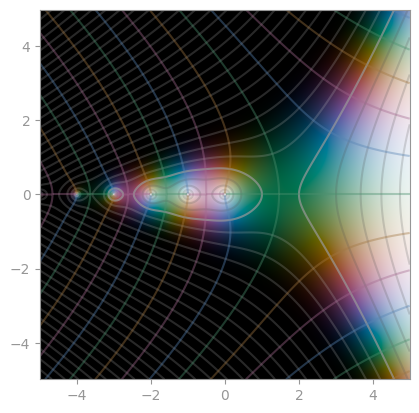 |
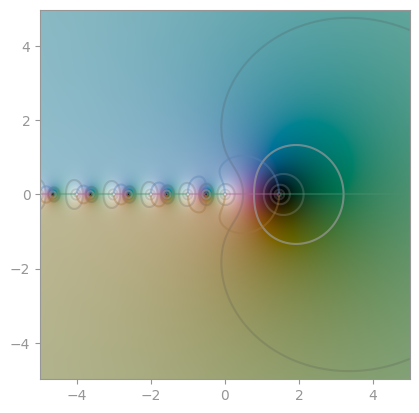 |
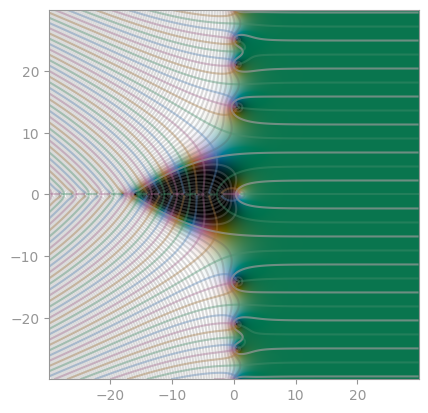 |
|---|---|---|
scipy.special.gamma |
scipy.special.digamma |
mpmath.zeta |
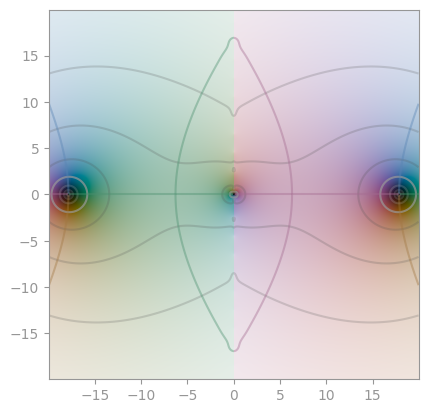 |
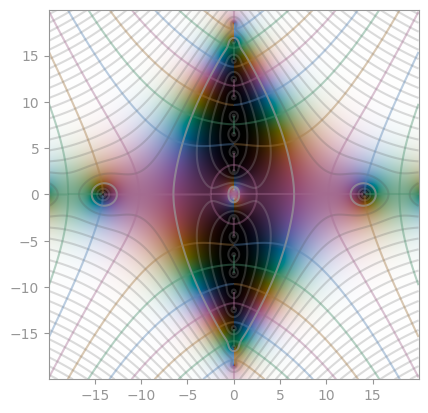 |
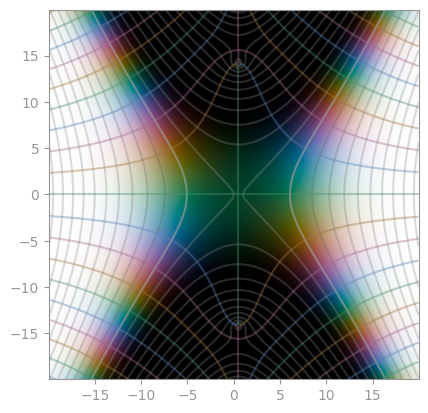 |
|---|---|---|
mpmath.siegeltheta |
mpmath.siegelz |
Riemann-Xi |
Testing
To run the cplot unit tests, check out this repository and type
pytest
Similar projects and further reading
- https://github.com/endolith/complex_colormap
- John D. Cook
- Elias Wegert, Visual Complex Functions
- Juan Carlos Ponce Campuzano, DC gallery
License
This software is published under the GPLv3 license.
Project details
Release history Release notifications | RSS feed
Download files
Download the file for your platform. If you're not sure which to choose, learn more about installing packages.




















